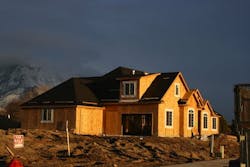In my last blog, I discussed whether to comply or not to comply, and the bottom line is that you don’t have a choice but to comply under the Federal Clean Water Act. The Clean Water Act provides for civil and criminal penalties. Levied by the U.S. EPA and the individual states, the penalties for non-compliance are very stiff and vary state to state.
In reviewing the state penalties for non-compliance, they generally fall under three categories:
- Falsification of records
- Falsification of monitoring systems
- Violations of permit conditions
The third category can have sub-categories, which then have two sub groups:
- Any Person — Violation, Negligent Violation, any person Knowingly Violates, and Knowingly Violate-Imminent Danger Provision: Any Person… “and who knows at that time that he thereby places another person in imminent danger of death or serious bodily injury.”
- Any Organization — Violation of the imminent danger provision.
Most state penalties mirror the EPA penalties, although some states are actually much less. The EPA penalties stand out as exemplified in Table EO1 Varying State & Federal Penalties For Non-Compliance:
In California, the fines and/or imprisonment for violation and non-compliance are levied on the Legally Responsible Party (LRP) (Owner). In other states, fines can be levied on the owner, operator, agent for the operator, and other parties involved in the construction.
It is of utmost importance for you as a developer and even if you are a lender as a successor in interest to distressed property through foreclosure, or a receivership, to understand what your liability is for non-compliance and how non-compliance can impact your contractors, operators, agents and employees directly. For buyers of distressed properties, be sure to verify if there are any outstanding violations and unpaid penalties for non compliance.
So, you see that compliance with NPDES is very serious, and, with the state and federal budgets in such distress, all are looking for sources of revenue and properties that are out of compliance are a red flag for the regulatory agencies and a revenue stream to help fund their distressed budgets.
(1) Ref: United States Environmental Protection Agency NPDES General Permit for Stormwater discharges From Construction Activities, Appendix G-Standard Permit Conditions 1. Duty To Comply B. & C. (http://www.epa.gov/npdes/pubs/cgp2008_finalpermit.pdf)
(2) Ref: State of California State Water Resources Control Board (Waterboard) National Pollutant Discharge Elimination System (NPDES) General Permit For Storm Water Discharges Associated With Construction And Land Disturbances Activities Order No. 2010-0014 DW2 NPDES No. CS000002 Part IV Special Provisions, Paragraphs N. Penalties for Falsification of Records & R. Penalties for Violations of Permit Conditions. (http://www.waterboards.ca.gov/water_issues/programs/stormwater/docs/constpermits/wqo_2009_0009_complete.pdf)
(3) Ref: Illinois Environmental Protection Agency National Discharge Elimination System General NPDES Permit for Stormwater Discharges from Construction Activities, Part VI Standard Permit Conditions Paragraphs H. Falsification of Records & I. Falsification of Monitoring Systems http://www.epa.state.il.us/water/permits/storm-water/general-construction-permit.pdf
